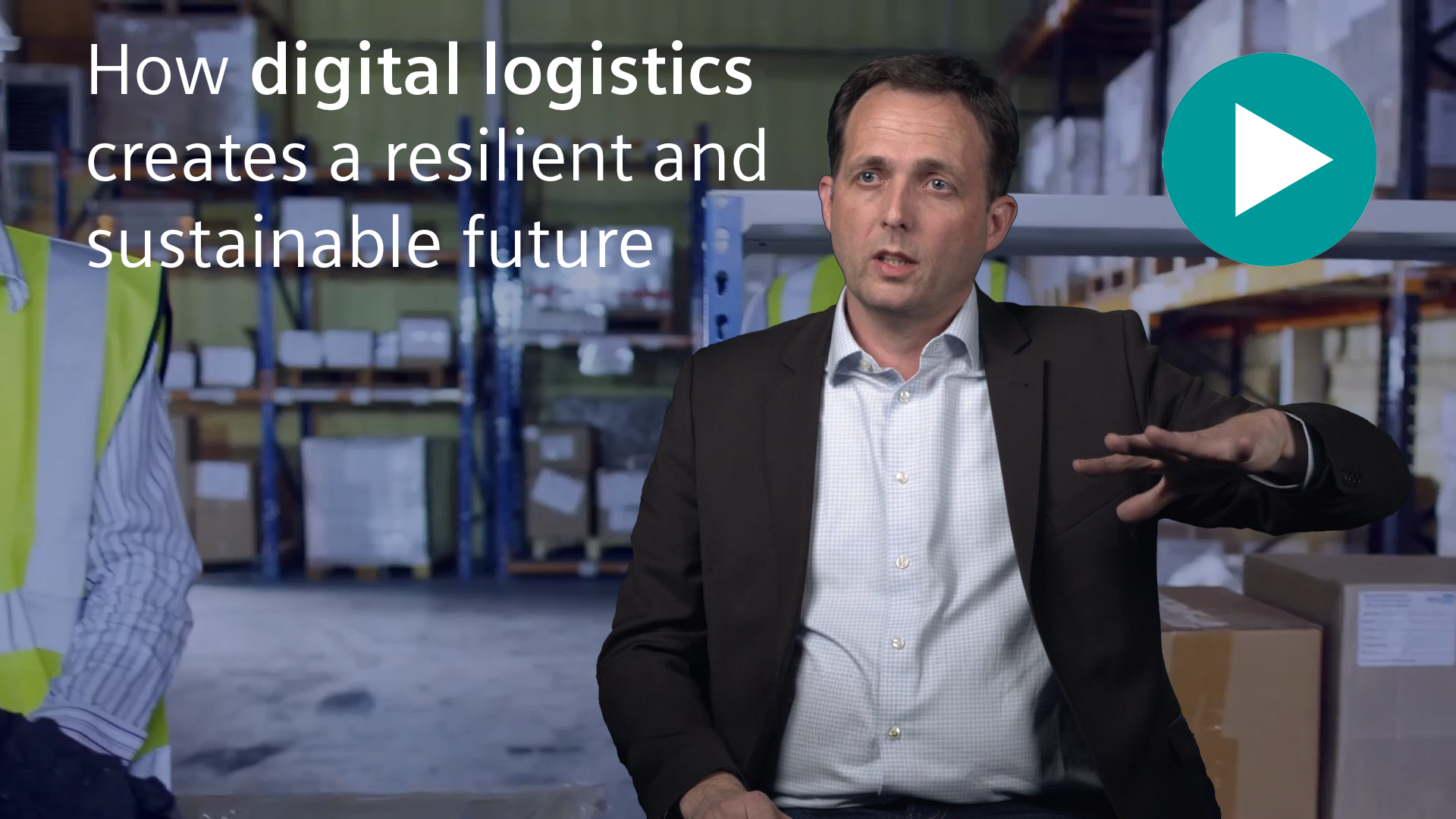How digital logistics creates a resilient and sustainable future

Insights from Volker Albrecht, VP Business Line Manufacturing, Siemens Digital Industries Software
1. Manufacturing trends for Digital Logistics
The manufacturing landscape is undergoing a transformation driven by efficiency, localization, and sustainability. Companies are striving to produce goods as close to the customer as possible, reducing lead times and increasing flexibility. This shift is exemplified by the trend toward lot size one—a production model tailored to individual customer needs while maintaining mass production efficiencies.
At the same time, glocalization is reshaping production footprints, prompting companies to strategically relocate facilities based on cost, demand, and supply chain resilience. This approach minimizes risks while maximizing responsiveness to market shifts.
Sustainability is also a core priority. With 80% of CEOs recognizing sustainability as a critical agenda item, manufacturers are integrating eco-friendly practices from the outset—starting with product design, optimizing energy consumption, and rethinking logistics for reduced carbon footprints.
We only have one planet, and we need to take care. A lot of companies see sustainability as one of their main goals, embedding it from product design to logistics.
Volker Albrecht, VP Business Line Manufacturing, Siemens Digital Industries Software

2. Industry challenges
Despite advancements in digital logistics, manufacturers continue to face several pressing challenges:
- Supply Chain Disruptions: Unexpected events, from geopolitical tensions to natural disasters, have exposed vulnerabilities in global supply chains. Even the most advanced production lines cannot function without timely access to materials.
- Aging Workforce: The industry struggles with a shortage of skilled labor, making automation and digitalization crucial for optimizing efficiency.
- The Glocalization Dilemma: Companies must decide when and where to shift production, balancing cost efficiencies with supply chain resilience.
- Sustainability vs. Cost Pressures: While businesses recognize the need for sustainability, they must also navigate financial constraints when implementing green initiatives.
Addressing these challenges requires a holistic approach, integrating supply chain insights into every stage of the production and logistics process.
3. The competitive advantage of Digital Logistics software
A key differentiator in today’s competitive landscape is the ability to integrate supply chain and logistics into decision-making from the very beginning. Digital logistics software provides manufacturers with critical tools to enhance efficiency and resilience:
- End-to-End Supply Chain Visibility: Real-time data enables proactive decision-making, helping businesses anticipate delays and optimize inventory.
- Simulation and Optimization: By merging production and logistics simulations, companies can test different scenarios and make informed choices about supplier selection, transportation routes, and distribution strategies.
- Proactive Problem Solving: Predictive analytics ensure that businesses can identify potential bottlenecks before they disrupt operations, reducing downtime and enhancing agility.
By embracing these capabilities, manufacturers transform logistics from a cost center into a strategic advantage.
It could become a competitive advantage if I take supply chain and logistics into my complete thinking from the very beginning.
Volker Albrecht, VP Business Line Manufacturing, Siemens Digital Industries Software

4. Empowering smart value chains for customers
One of the most compelling aspects of digital logistics is its ability to improve customer service and satisfaction. Real-world applications demonstrate how businesses across industries are leveraging logistics technology:
- Automotive After-Sales: Managing spare parts in the automotive sector is complex. With digital logistics, companies gain full transparency over their supply networks, ensuring that parts are always available at distribution centers and workshops.
- Smart Production Scheduling: Manufacturers using digital scheduling solutions can dynamically adjust production based on real-time supply chain insights, ensuring uninterrupted operations.
These examples highlight how a shift-left approach—embedding logistics intelligence early in the production lifecycle—can eliminate inefficiencies and create smart, resilient value chains.
The future of global supply chain visibility
In a world where disruptions are inevitable, companies must embrace digital logistics, real-time visibility, and integrated decision-making to remain competitive. Whether through sustainability initiatives, smart production scheduling, or after-sales optimization, businesses that break down silos and adopt a holistic approach will lead the future of manufacturing.
Are you ready to unlock new efficiencies and future-proof your supply chain? Now is the time to rethink logistics as a strategic enabler of manufacturing success.


